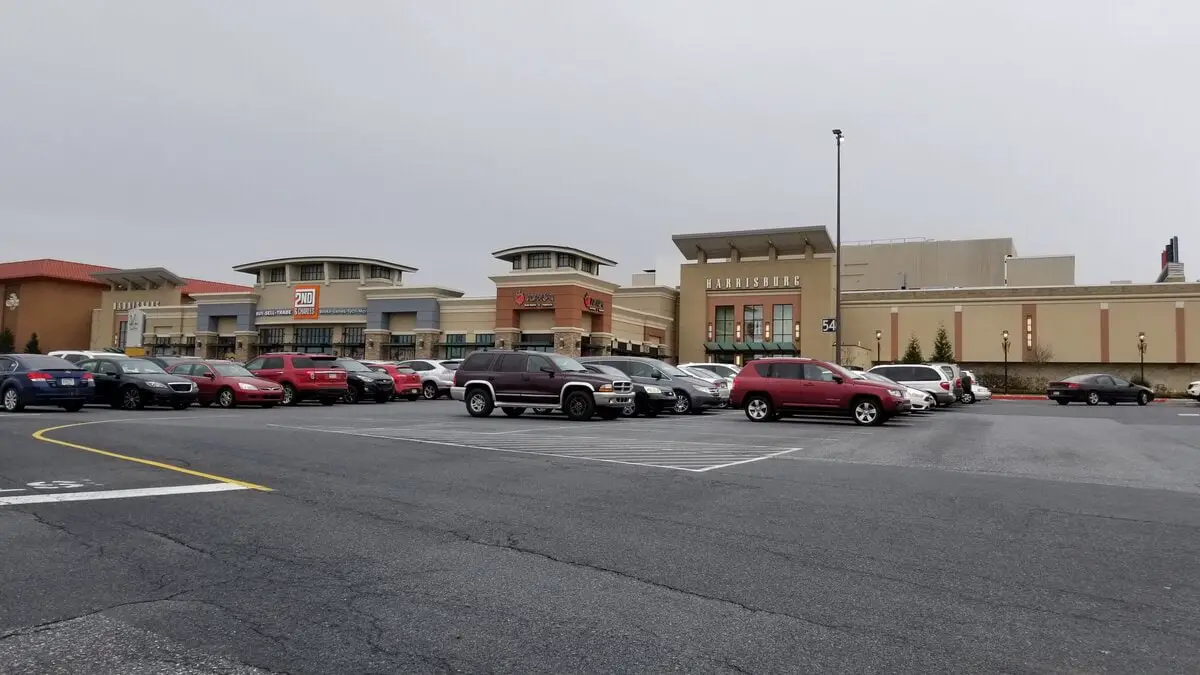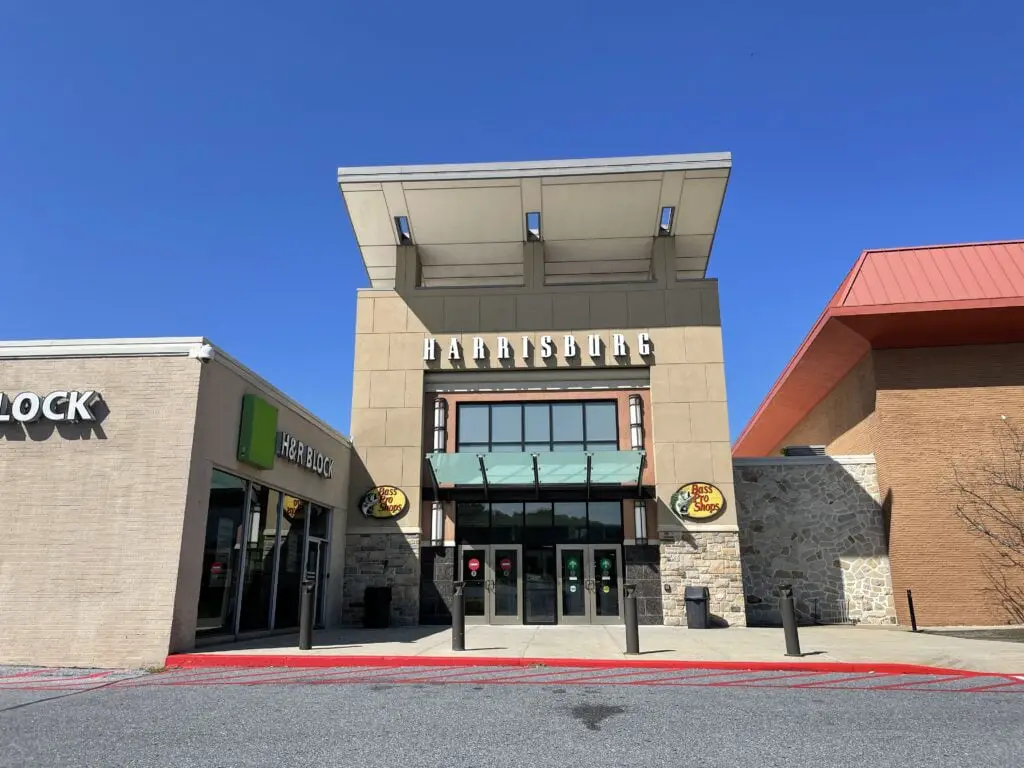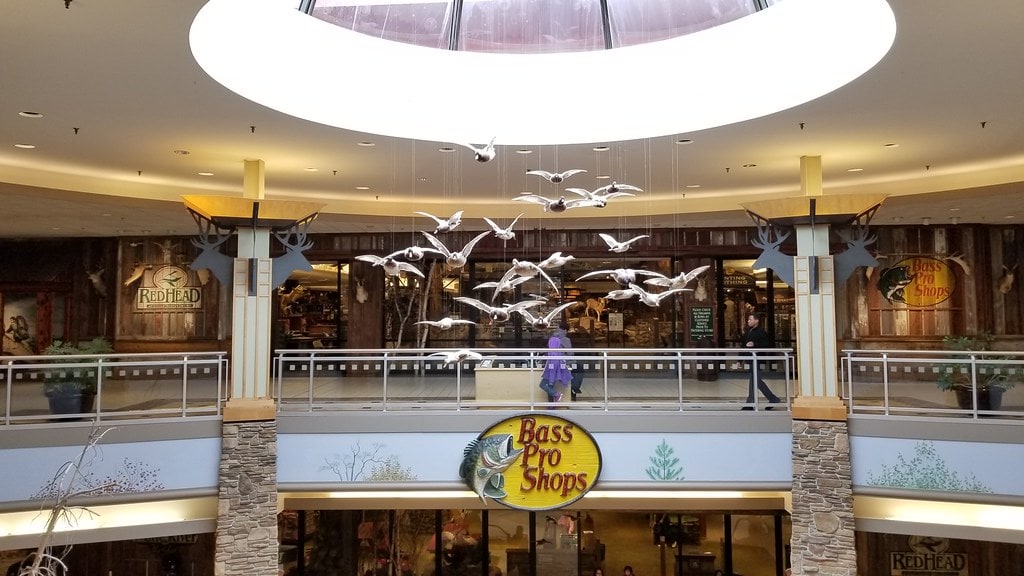The Birth and Early Years of Harrisburg Mall
In 1969, a significant addition to the retail landscape of Harrisburg, Pennsylvania, emerged with the opening of Harrisburg East Mall.
This establishment marked a new era in shopping and social interaction for the residents of Harrisburg and its surrounding areas.
Initially anchored by three major department stores – JCPenney, Wanamaker’s, and Gimbels – the mall quickly became a bustling hub of activity, drawing shoppers from all over the region.
Its strategic location in Swatara Township, just outside the capital city, made it an accessible destination for a diverse clientele.
Architectural and Cultural Significance
Beyond its commercial appeal, Harrisburg Mall stood out for its unique architectural features. One of the most intriguing aspects of its construction was the discovery of a natural limestone cave, known by various names such as Big Pit, Paxtang, or Crystal Paradise Cave.
This geological marvel, noted for its anthodite and speleothem formations, added a layer of natural history and curiosity to the mall’s foundation.
Such a natural wonder beneath a commercial establishment bridged the gap between urban development and the natural world.
Initial Success and Community Impact
The early years of Harrisburg Mall were marked by success and growth. It quickly became a key player in the region’s retail sector, attracting a steady flow of shoppers and visitors.
The mall’s diverse range of stores and services catered to various needs and preferences, making it a one-stop destination for things to do in Harrisburg, Pennsylvania.
This period of prosperity boosted the local economy and created a social space for community engagement and interaction.
The mall’s early success laid the groundwork for its future expansions and transformations, setting the stage for its evolving role in the Harrisburg metropolitan area.
Changing Faces – The Evolution of Anchor Stores
Anchor Store Replacements and Closures
The Harrisburg Mall witnessed significant changes in its anchor stores over the years, reflecting the dynamic nature of the retail industry.
In 1978, Gimbels, one of the original anchors, closed its doors due to poor sales and logistical challenges.
Hess’s quickly filled this space, marking the mall’s first major transition. The changes continued through the 1990s and 2000s, with Hess’s closing in 1994 and being replaced by Hecht’s.
This period was characterized by a series of replacements and closures that reshaped the mall’s identity and offerings.
The 1990s and 2000s Shifts
The late 1990s and early 2000s were pivotal for Harrisburg Mall. In 1999, Wanamaker’s, another original anchor, ceased operations, and Lord & Taylor opened its doors in 2000.
The turn of the millennium saw the closure of JCPenney in 2001, a significant departure as it was one of the mall’s founding anchors.
Boscov filled this vacancy in 2003, introducing a new retail player to the mall’s landscape.

Impact of Anchor Changes on Mall Traffic
The frequent changes in anchor stores profoundly impacted the mall’s traffic and popularity.
Each new store brought its unique brand and customer base, altering the mall’s demographic and footfall patterns.
While some replacements, like the introduction of Boscov’s, injected fresh energy into the mall, others, like the closure of long-standing stores, led to a sense of instability.
These fluctuations reflected broader trends in the retail sector, where competition and consumer habits were rapidly changing.
The 2004 Revitalization Effort and Its Aftermath
The $77 Million Revitalization Plan
In 2004, Harrisburg Mall embarked on an ambitious $77 million revitalization project. This plan aimed to rejuvenate and adapt the mall to the changing retail landscape.
Key components of this revitalization included extensive renovations to the mall’s decor and the addition of a 14-screen Great Escape theater.
The project was envisioned to culminate in 2008 with a new “streetscape” look on the mall’s north side, signaling a modern and refreshed identity.
Challenges and Unfinished Projects
However, the revitalization faced significant challenges. Changing market conditions and financial difficulties, particularly with the mall’s owner, Feldman Mall Properties, hindered the renovation’s progress.
The last phase of the project, which included the much-anticipated streetscape, remained uncompleted in 2009.
These challenges were symptomatic of the 2018 recession and larger issues in the retail industry, where traditional malls struggled to keep pace with evolving consumer behaviors and economic pressures.

The Decline of Harrisburg Mall
Economic and Retail Challenges
The decline of Harrisburg Mall after the late 2000s can be attributed to economic challenges and shifts in the retail landscape.
The rise of e-commerce and changing consumer shopping habits significantly impacted traditional brick-and-mortar establishments like Harrisburg Mall.
This period saw a nationwide trend of declining foot traffic in malls, as online shopping offered convenience and a wider range of products.
Store Closures and Vacancies
In 2008, Boscov’s, one of its anchor stores, filed for Chapter 11 Bankruptcy. This financial setback led to the closure of 10 Boscov’s stores, including the one at Harrisburg Mall.
The closure left a notable vacancy in the mall, marking a turning point in its commercial viability. In a turn of events the next year, on July 9, 2009, Harrisburg Mall encountered a financial challenge, leading to its sale at a sheriff’s auction.
This sale was necessitated by the default of the previous owner, Feldman Lubert Adler, on a substantial $52.5 million mortgage.
In June 2012, the mall was acquired from TD Bank by St. John Properties and Petrie Ross Ventures.
These Maryland-based commercial real estate developers, known for owning and developing over 25 million square feet of commercial property across six states, brought new hope and potential for revitalization to the Harrisburg Mall.
Macy’s, a significant anchor, announced its closure in 2020 as part of a broader strategy to shut down 125 stores nationwide. This departure left a substantial void in the mall’s offerings.
The mall also faced increasing vacancies as smaller retailers and businesses struggled to sustain operations amidst declining footfall and sales.
These closures affected the mall’s revenue and appeal as a shopping and social destination.

Perceptions and Current State
By 2023, Harrisburg Mall had come to be perceived as a ‘dead mall’ by many. The once bustling center of commerce and social interaction now faced a stark reality of empty storefronts and reduced visitor numbers.
The mall’s current state, characterized by a significant number of vacancies and a need for major anchor stores, reflected the challenges many traditional malls face in adapting to the rapidly evolving retail sector.
The Redevelopment Plan of 2023
Announcement of Demolition and Redevelopment
In a significant turn of events, 2023 announced a new future for Harrisburg Mall. St. John Properties, the mall’s current owner, revealed plans for demolition, excluding Bass Pro Shops, and a subsequent redevelopment.
This plan, set to commence with demolition in 2024, signaled the end of the mall as a traditional retail space and the beginning of its transformation into a mixed-use business and retail community named Swatara Exchange. The mall is scheduled to close on January 31, 2024.
Details of the Swatara Exchange Project
The Swatara Exchange project envisions a mixed-use space that includes single-story multi-use/flex commercial space, inline retail, and retail pad sites.
The redevelopment aims to create a modern business community, accommodating a range of uses from professional services to light manufacturing.
The project anticipates creating around 1,000 new employment opportunities and is projected to generate an additional $1 million in tax revenue each year.
This ambitious plan reflects a strategic shift in response to the changing dynamics of retail and commercial real estate.
One of the key aspects of the redevelopment plan is the retention of certain retailers.
This decision underscores the importance of maintaining a balance between new development and preserving existing businesses that have been integral to the mall’s identity.
Including these retailers in the further development plan reflects a strategic approach to ensure continuity and familiarity for the local community.
Community and Economic Implications
The redevelopment of Harrisburg Mall into Swatara Exchange holds significant implications for the local community and economy.
The project promises to inject new life into the area, potentially revitalizing the local economy with job creation and increased commercial activity.
The transformation responds to the community’s evolving needs, moving from traditional retail to a more diversified and sustainable model.
This redevelopment represents a broader trend in repurposing aging malls to meet contemporary economic and social needs.
The Legacy and Future of Harrisburg Mall
Reflecting on the Mall’s Legacy
Since its inception in 1969, the Harrisburg Mall has been a significant landmark in the Harrisburg metropolitan area. It was a bustling center of commerce and social gatherings for over five decades.
The mall’s journey from a thriving shopping center with anchors like JCPenney, Wanamaker’s, and Gimbels to a site with significant vacancies reflects the broader shifts in the retail industry.
The mall’s legacy is intertwined with the memories and experiences of the local community, marking it as an important chapter in the region’s commercial history.
The Future of Retail Spaces
The story of Harrisburg Mall is symbolic of the transformation facing retail spaces globally. The shift from traditional brick-and-mortar retail to online shopping platforms has necessitated a reimagining of the role and function of physical retail spaces.
Harrisburg Mall’s transition into Swatara Exchange indicates this trend, where mixed-use developments are increasingly preferred.
These spaces are designed to cater to various needs, including shopping, business, and leisure, reflecting the evolving consumer preferences and market demands.

Final Thoughts on Transformation and Adaptation
The transformation of Harrisburg Mall into a mixed-use space is not just a change in structure but also a symbol of adaptation and resilience.
It highlights the need for retail spaces to evolve and reinvent themselves to stay relevant in a rapidly changing economic and social landscape.
The future of such spaces lies in their ability to offer more than just shopping – they need to become destinations that offer diverse experiences and services to their communities.

I understand why you would feel sad about the mall’s current state. It’s always difficult to see a place with so many memories undergo changes.